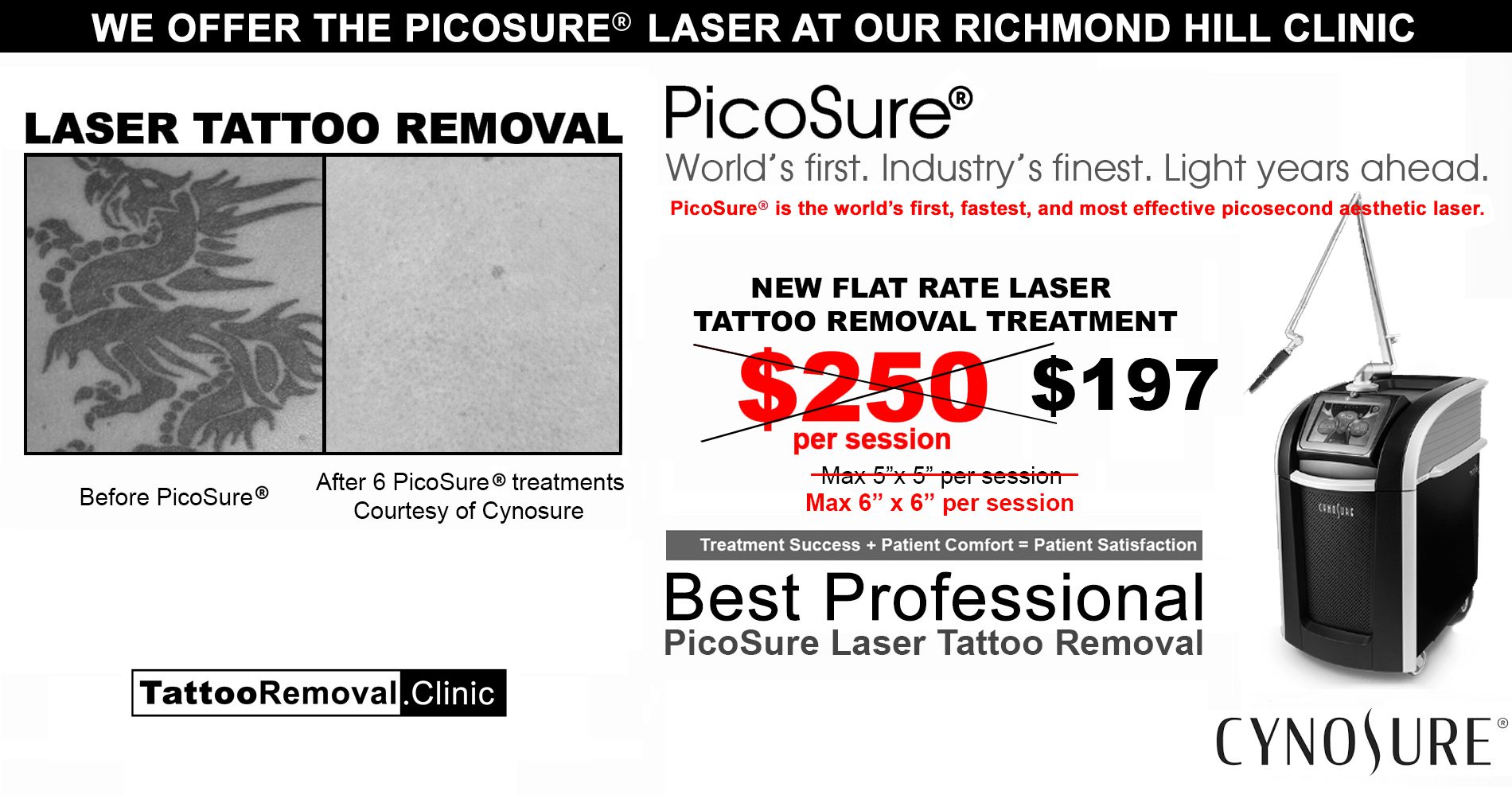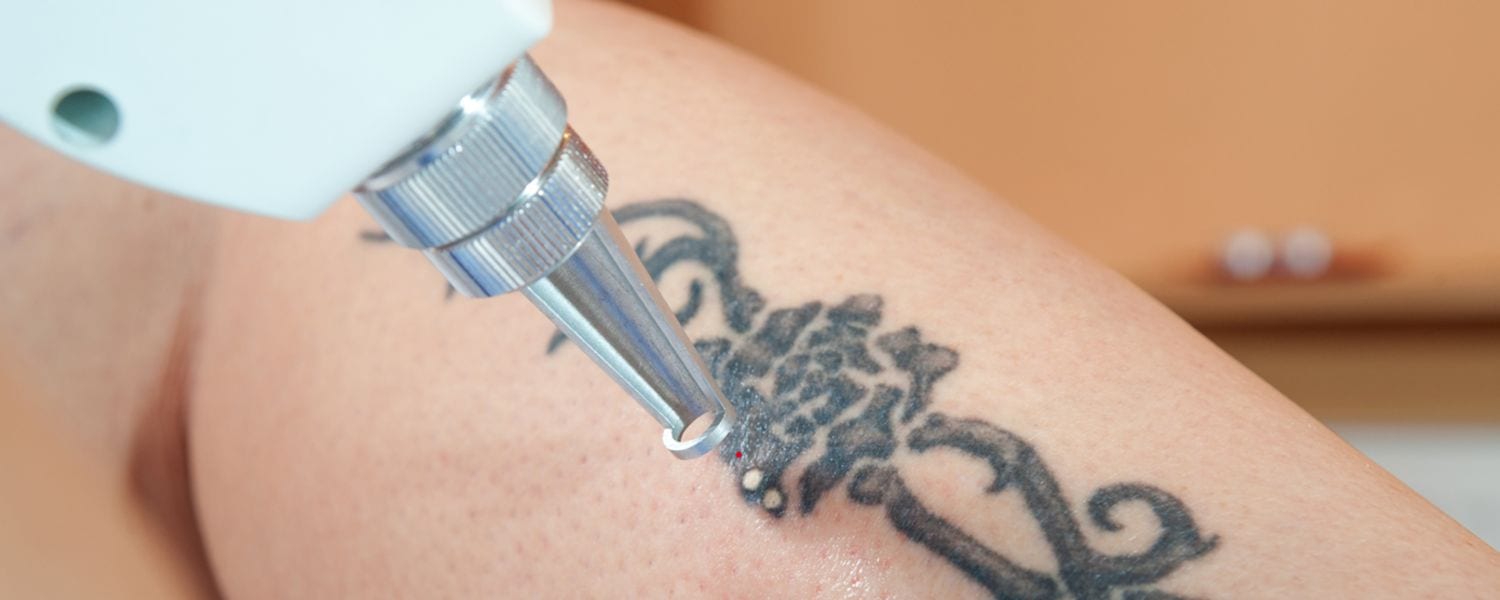Table of Contents
Tattoo Removal Mississauga: A Comprehensive Guide
Understanding Tattoo Regret
Tattoo regret is a multifaceted phenomenon that intertwines personal identity, societal perceptions, and evolving life circumstances. As the ink permeates the dermis, so do the stories, memories, and meanings associated with each design. Yet, as with any form of expressive art, tattoos are not impervious to the tides of change.The Emotional Side of Tattoo Regret
The psychology behind tattoo regret is as intricate as the designs themselves. At the forefront, emotional shifts play a pivotal role. Tattoos, often symbols of specific life chapters or relationships, can become painful reminders when those chapters close or relationships end. For some, a tattoo might signify a rebellious phase, a tribute, or even a spontaneous decision made while on vacation. As individuals evolve, grow, and reflect, what once resonated deeply might no longer align with their current self-concept. Moreover, societal perceptions and potential stigmas attached to tattoos can lead to regret, especially if they negatively impact professional opportunities or societal acceptance. A shift in personal values, spiritual beliefs, or simply aesthetic preferences can also underpin the desire to erase or alter a once-cherished design.Mississauga’s Growing Demand for Tattoo Removal
Mississauga, a culturally rich and diverse city, is witnessing an uptick in tattoo removal requests, mirroring a global trend. Several factors contribute to this surge:- Cultural Fluidity: As people from different backgrounds mingle, there’s a constant evolution in personal and collective beliefs. What might be considered acceptable or trendy in one culture may be looked down upon in another.
- Professional Landscape: Mississauga’s burgeoning corporate and tech sectors may influence tattoo perceptions. While tattoos are becoming more accepted, certain professions and corporate cultures still maintain conservative views.
- Technological Advancements: As tattoo removal technologies become safer, more efficient, and less painful, more residents are exploring these options to bid adieu to their unwanted ink.
Statistics and Trends: A Look into Tattoo Removal Requests
Recent years have seen a pronounced increase in the number of individuals seeking tattoo removals globally, and Mississauga is no exception. Laser tattoo removals saw a 15.4% uptick in 2018, as per the data from the American Society for Aesthetic Plastic Surgery over its preceding year. Furthermore, the American Society for Dermatologic Surgery survey indicated that their physicians performed over 85,000 tattoo removal procedures in a year. Such statistics underscore a shifting landscape. Tattoos, while still immensely popular, are undergoing a period of re-evaluation as individuals balance personal expression with evolving life circumstances.The Science Behind Tattoo Removal
Tattoo removal is a blend of art and science, where understanding the body’s response to ink and laser interventions is pivotal. Tattoos are permanent because the ink particles reside in the dermis, a deeper skin layer that cells don’t routinely shed. Large ink particles are introduced into the dermis using needles during the tattooing process. These particles are too large for the body’s immune system to eliminate, resulting in a permanent design.How Tattoos Become Permanent: A Brief Dive into Dermis
Tattoos have intrigued civilizations for millennia, symbolizing rites of passage, tribal affiliations, or personal narratives. But how does a brief moment of ink application translate to a lifetime of permanence? The answer lies deep within the skin, particularly in the dermis. The human skin is structured into three essential layers: the external epidermis, the central dermis, and the innermost hypodermis. A machine with rapidly jabbing needles introduces ink into the dermal layer during tattoo application. The dermis is targeted because of its relative stability compared to the epidermis, which continuously sheds cells. The dermis houses blood vessels, nerves, hair follicles, and collagen strands, providing stability and undisturbed tattoo ink. The body’s immune response plays a role here, too. Upon introducing tattoo ink, the immune system views these large pigment particles as foreign invaders. Macrophages—cells responsible for digesting cellular debris and pathogens—attempt to consume the ink particles but can only encase them. As a result, the ink becomes ‘trapped,’ leading to the permanency of the tattoo.Differentiating Between Tattoo Application and Removal Techniques
The juxtaposition between tattoo application and removal combines art, science, and evolving technology. While both processes involve the dermis layer of the skin, their techniques, goals, and outcomes are contrasting. Application: As mentioned, the tattoo application uses a machine equipped with needles that rapidly inject ink into the dermis. The artist maneuvers the machine guided by a chosen design, embedding the ink in a way that brings the art to life. Depth, needle, and ink types ensure the tattoo’s clarity and longevity. Removal: Tattoo removal, especially laser tattoo removal, operates on a different principle. Here, the aim is to break down the ink particles without causing significant damage to the surrounding skin tissue. Lasers emit concentrated light that’s absorbed by the tattoo’s pigment. This light energy causes the ink particles to fragment into smaller bits, which the body’s immune system can naturally eliminate. The complexity of removal often depends on the tattoo’s age, size, location, colour, and even the individual’s skin type.FDA-Regulated Equipment and Safety Standards
The rise in tattoo popularity has ushered in an era of advanced equipment and strict regulatory oversight to ensure client safety. Tattoo inks and their removal tools fall under the watchful eye of the U.S. Food and Drug Administration (FDA). Tattoo inks, interestingly, aren’t explicitly approved by the FDA but are subject to certain regulations, especially if the inks contain colour additives. The FDA has been proactive in studying the chemical composition of tattoo inks and their short and long-term effects on human health. Laser devices designed for tattoo removal, on the other hand, fall under the category of “prescription devices,” meaning they’re regulated and can only be used under the direction of a licensed practitioner. This ensures that the lasers, which require precision and expertise, are operated to prioritize patient safety.Laser Tattoo Removal: A Closer Look
As tattoos have become a cultural mainstay, so need their efficient removal. Laser technology, with its precision and efficacy, has emerged as the preferred method of eradicating unwanted ink. The core principle behind laser tattoo removal is selective photothermolysis. In this process, specific wavelengths of light target the tattoo ink, ensuring minimal damage to surrounding tissues. The absorbed light heats the ink particles, causing them to fragment. However, it’s not a one-size-fits-all approach. Tattoos come in many colours, each absorbing a specific range of light frequencies. This necessitates multiple lasers or adjustable wavelength lasers to effectively target and break down different pigments. Recent advancements, like Q-switched and picosecond lasers, deliver short, intense bursts of energy that are especially effective in ink shattering. Their rapid pulse duration ensures the tattoo absorbs the energy without significantly heating and damaging adjacent skin structures. Post-treatment, the immune system recognizes the fragmented ink particles as foreign bodies. Over time, macrophages and lymphatic drainage gradually eliminate these particles from the body.The Mechanics of Laser Technology
The acronym ‘Laser’ represents Light Amplification by Stimulated Emission of Radiation, a technology known for producing a concentrated beam of monochromatic light. Due to its high energy and specificity, this beam can be utilized for many applications, including tattoo removal. At the heart of this technology lies the principle of stimulated emission. When an atom’s electron absorbs energy, it jumps to a higher energy state. As it returns to its ground state, it emits a photon. In lasers, these emitted photons are synchronized, creating a coherent beam of light that can deliver concentrated energy to a specific target. For tattoo removal, this laser energy needs to be meticulously tuned. The objective is to deliver sufficient energy to break down the tattoo ink particles without damaging the surrounding skin tissue. Thus, precision, wavelength, pulse duration, and energy settings are paramount in ensuring the effectiveness and safety of the procedure.Color Spectrum: Which Tattoos Are Easier to Remove?
Tattoo inks span a wide array of colours, and understanding the light absorption properties of each colour is crucial for effective removal. Different ink colours absorb different light wavelengths, meaning removal efficacy can vary significantly based on the tattoo’s pigment.- Black and Dark Blue Inks: These colours are most responsive to laser treatments. They absorb a broad light spectrum, making them easier to target and break down.
- Red and Related Hues: Red inks respond well to green light lasers. The contrast in the colour spectrum allows for effective targeting of these pigments.
- Green, Yellow, and Lighter Colors: Historically, these colours have been more challenging to remove. They require specific laser wavelengths and may necessitate more treatment sessions. Innovations like picosecond lasers have improved outcomes for these traditionally stubborn colours.
Session Counts: How Many Visits Will It Take?
The number of sessions required for tattoo removal isn’t uniform and depends on various factors:- Ink Depth: Tattoos that penetrate deeper into the dermis typically require more sessions.
- Tattoo Age: Older tattoos fade over time and are easier to remove than newer ones.
- Colour Complexity: As discussed, certain colours are harder to eliminate and may require additional sessions.
- Tattoo Size: Larger tattoos generally need more sessions than smaller ones.
- Individual Factors: Skin type, health, and immune response can also impact the sessions needed.
Alternative Tattoo Removal Methods
While laser technology dominates the tattoo removal landscape due to its precision and efficacy, several other methods have been historically employed or are still in use today:- Excision: This surgical method involves cutting the tattooed skin and stitching the wound together. It’s often reserved for smaller tattoos.
- Dermabrasion: This method involves “sanding” the skin with a rotary device. It exfoliates the outer and middle layers of the skin to fade the tattoo. However, it can be painful and might only sometimes offer uniform results.
- Salabrasion: A combination of salt and water is applied to the tattoo, and then the area is rigorously rubbed to fade the tattoo. Like dermabrasion, it’s an older method with varying results.
- Chemical Peels involve applying acidic substances to the tattoo to peel away skin layers, hoping to fade or remove the tattoo. It can be painful, and risks include scarring and hyperpigmentation.
- Tattoo Removal Creams: Available over the counter, these creams claim to fade tattoos over time. However, their efficacy is often debated, and potential skin reactions might occur.
Criteria for Choosing a Reliable Clinic
Choosing a reliable tattoo removal clinic is paramount not only for the efficacy of the treatment but also for ensuring the patient’s safety and comfort. Here are several criteria to consider when making a selection:- Certification and Licensing: Always opt for a clinic with the necessary certifications and licenses from recognized medical boards or associations. Such certifications attest to the clinic’s adherence to practice and safety standards.
- Experience of Practitioners: A seasoned practitioner brings a wealth of experience. They can more adeptly handle complications, understand the nuances of different skin types, and deliver optimized results.
- Equipment and Technology: The best clinics invest in cutting-edge equipment and technologies. Using state-of-the-art lasers ensures precision, reduced discomfort, and improved outcomes.
- Hygiene and Sanitation: The importance of cleanliness cannot be overstated. A clean clinic reflects a commitment to patient well-being and minimizes the risk of infections.
- Pre and Post-Treatment Care: A commendable clinic guides care measures before and after the treatment, ensuring optimal recovery and results.
Importance of Expert Consultation and Customized Treatment Plans
Every individual is unique, and so is every tattoo. Hence, a one-size-fits-all approach is neither effective nor advisable for tattoo removal:- Skin and Tattoo Assessment: An expert consultation begins with assessing the tattoo’s size, colour, age, and depth. Concurrently, the patient’s skin type and health are evaluated.
- Customized Plans: A tailored treatment plan is devised based on the assessment. This might include the type of laser to be used, the estimated number of sessions, and any preparatory measures required.
- Addressing Concerns: During a consultation, patients can express doubts, seek clarifications, and establish achievable expectations. An expert can clarify, allay fears, and guide the patient on the best action.
- Health Considerations: Some individuals might have health conditions or medications that can affect tattoo removal. An expert consultation ensures that all such factors are considered and necessary precautions are taken.
Testimonials and Real-Life Experiences: Making an Informed Decision
Patient testimonials and real-life experiences offer valuable insights into a clinic’s professionalism, efficacy, and patient care:- Authentic Feedback: Real-life experiences present an unfiltered view of what one can expect. They shed light on the effectiveness of treatment, pain management, post-treatment care, and overall patient satisfaction.
- Reliability Check: A clinic with overwhelmingly positive reviews and testimonials will likely be reliable and proficient in its services.
- Before and After Images: Many clinics showcase ‘before and after’ images of past patients. These images can be instrumental in setting expectations and gauging the clinic’s expertise.
- Peer Recommendations: Sometimes, recommendations from friends or family members who have undergone tattoo removal can be incredibly helpful. They offer a personal account of the entire experience, from consultation to recovery.
Q&A
What is the most effective method for tattoo removal?
The most effective and commonly used method for tattoo removal is laser technology, specifically Q-switched lasers, which release short bursts of high-intensity light to break down tattoo ink.How many sessions are typically required for complete tattoo removal?
The number of sessions varies depending on the tattoo’s size, colour, location, and age. On average, most tattoos require 6 to 10 sessions for significant fading or complete removal.Is the tattoo removal process painful?
Many patients liken the feeling to a rubber band striking the skin. While it can be uncomfortable, most clinics offer numbing solutions to minimize discomfort.Are there any risks or side effects associated with laser tattoo removal?
Common side effects include redness, swelling, and slight pain. There’s a minimal risk of scarring, infection, or skin discoloration, especially if post-treatment care instructions are followed.Why are certain colours harder to remove than others?
Lighter colours like green, yellow, and blue have specific wavelengths that are not as easily absorbed by standard lasers. Black and red inks are generally easier to remove because they absorb all laser wavelengths.Can any tattoo be completely removed?
While many tattoos can be significantly faded or fully removed, certain inks and colours might still need to be eliminated. The success of removal also depends on the depth of the ink and the individual’s skin type.How long should I wait between tattoo removal sessions?
It’s advisable to leave a 6-8 week gap between treatments, providing time for the skin to recover and for the body to eliminate fragmented ink residues, away the broken-down ink particles.Are there any post-treatment care measures to follow?
Yes, you should avoid sun exposure, keep the area clean and moisturized, and refrain from picking or scratching the treated skin. Following post-treatment care minimizes risks and promotes better results.Will there be scarring after the tattoo removal process?
While modern laser technologies have minimized the risk, there’s still a slight chance of scarring, especially if post-treatment care is not followed. Choosing an experienced practitioner further reduces this risk.How does tattoo removal cost compare to getting a tattoo?
Tattoo removal is generally more expensive than getting a tattoo. Costs vary depending on the clinic, the technology used, the tattoo’s size and complexity, and the number of sessions required.Final Words
Tattoo removal is a delicate process that demands expertise, precision, and care. The journey from deciding to remove a tattoo to witnessing the final results requires patience, informed decision-making, and trust in a proficient practitioner. While the technology and techniques have advanced considerably, ensuring the best outcome hinges largely on the clinic’s choice and its practitioners’ expertise. As with any medical or cosmetic procedure, thorough research, understanding the process, and setting realistic expectations are the keystones to a satisfying tattoo removal experience. Always prioritize safety, ask questions, and make decisions based on knowledge and trust.



